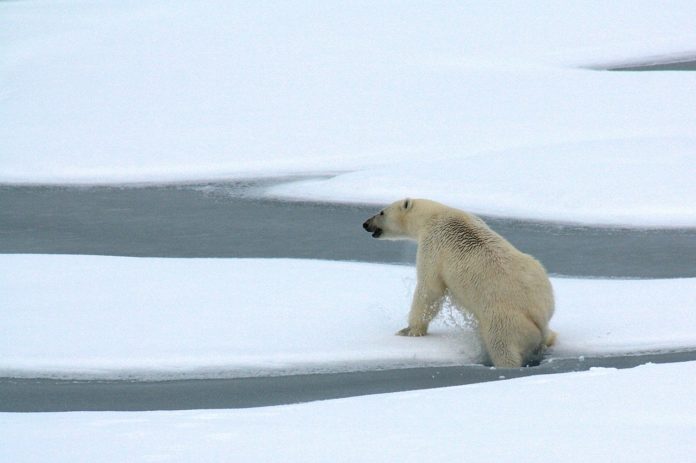In less than 30 years, the Arctic is projected to lose its summer sea-ice coverage entirely. It will be yet another worst-case scenario become reality as a result of the world’s ongoing climate crisis.
This prediction comes from an international study published in Geophysical Research Letters that used simulations to investigate the impact of climate change on Arctic sea-ice. Alarmingly, the results “really surprised” the scientists involved: simulations revealed that the question is no longer whether a complete loss will occur, but instead how soon, how often, and for how long.
The research was the result of a collaboration between scientists from 21 institutes worldwide, including McGill University, the University of Manitoba, and Environment and Climate Change Canada.
The importance of Arctic sea-ice
Today, the Arctic is covered in ice year-round. This sea-ice is a crucial part of the Arctic ecosystem: it keeps the Arctic cool by reflecting sunlight back out into space, and provides a hunting ground for species such as seals and polar bears. During the Arctic summer this sea-ice coverage decreases, and in the cooler winter months it grows back.
According to data from NASA, however, the Arctic sea-ice minimum is now declining by 12.85% per year, and it’s only a matter of time before the summer sea-ice coverage is gone entirely.
To investigate how this decline is expected to proceed over time, the team used 40 different models of the world’s climate and observed Arctic sea-ice extent in each scenario. The models varied in their amounts of carbon dioxide emissions and global warming, and were the most sophisticated climate models that had ever been used in such a study.
“This is state-of-the-art in terms of sea ice simulations,” said Till Wagner, an assistant professor of physics and physical oceanography from the University of North Carolina Wilmington.
In models with high levels of carbon dioxide emissions and little-to-no climate protection, summer sea-ice in the Arctic disappeared quickly. This is unsurprising, but highlights the urgency of committing to reducing carbon dioxide emissions worldwide.
Summer Arctic sea-ice will soon be gone
More troubling is the fact that even in models where carbon dioxide emissions were rapidly reduced, the simulations showed that we will see ice-free summers in the Arctic before the year 2050.
“The signal is there in all possible futures,” said Ed Blockley, head of the Met Office‘s Polar Climate Group and co-author on the study. “There is still a lot of uncertainty, [b]ut all the models are clear that the sea-ice will continue to decline.
“At some point, it will be gone, but when that happens is still uncertain.”
The main uncertainties lie in how soon we can expect complete loss of summer sea-ice to occur, as well as how often we expect it to reoccur. Sea-ice levels do vary from year to year, so exact predictions are tricky — but the bottom line is that ice-free Arctic summers are close on our horizon.
The authors do note that rapid reductions in carbon dioxide emissions can lead to scenarios where ice-free years occur only occasionally, instead of every summer. It’s a small glimmer of hope in the otherwise grim simulations.
We can’t avoid devastating ice-free summers for the Arctic entirely, but cutting our carbon emissions drastically may allow us to avoid the very worst-case scenarios.










































